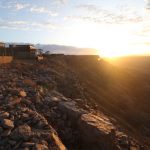When it comes right down to it, the wildlife was here long before the cars were. Roads are not a good thing for migrating critters and the humans who plow into them at high speed in the middle of the night aren’t real happy about the encounters either. If they survive, there will be a whole bunch of insurance paperwork to deal with.
Wildlife crossings work
Ecologists have been conducting a controversial experiment to protect migrating wildlife for around two decades now. When the first crossings were installed, they weren’t exactly ridiculed but they weren’t embraced with open arms either. Looking back at how effective they were reveals two major findings.
First, the crossings are “one of the best ways to reduce wildlife-vehicle collisions and mitigate one of the most significant human impacts on ecosystems.” The second is that they tend to be really expensive.
Montana has a whole bunch of them but they haven’t put in any new ones for a while. California and Oregon have some recently installed or on the drawing board though. The first step is to determine what animals want to cross which roads where.

After they figure out what the wildlife needs to be happy, they can figure out the most cost effective ways to make that happen.
One of the first considerations is that animals don’t like unnatural surfaces. If an overpass solution is the only option available, they need to be built extra sturdy to accommodate the weight of an extra layer.
The entire crossing has to be covered in local soil and vegetation before wildlife will get the idea it’s a safe place to be.

Not as expensive as they seem
The first things ecologists have to cope with in order to get their plans approved is the sticker shock which always comes with the wildlife crossing projects. Even if an underground option is available, as with the use of large drain culverts, construction costs can be enhanced by local conditions. Also, there has to be a way to keep the animals in the places they should be, far away from humans.
People need to be kept away from the critters, too. One “camper” learned that lesson the hard way when he curled up in a tunnel used as a crossing for bears. Luckily, the bear didn’t mind the trespasser, that time, and simply wandered on past with hardly a glance.
Yes, the ecologists admit, the plans are expensive and the fences are expensive too but when you add it all up, it isn’t as costly as the amount insurance companies pay out from all the animal related collisions.

According to Martha Williams with the Fish and Wildlife Service, “we can’t underestimate the importance of these crossings for [motorist] safety, and for wildlife. Experience shows that species use them, and they help with safety.”
One study highlights just how effective the crossings can be. The report focused on 15 underpasses and discovered that “24 species of animal used the crossings during the study period.”
A survey of the wildlife distribution showed “deer were most likely to use them, followed by black bears and coyotes, but other animals including bobcats, ring-necked pheasants and raccoons used them, too.“









